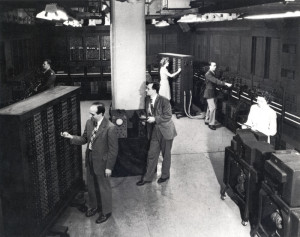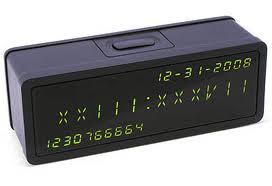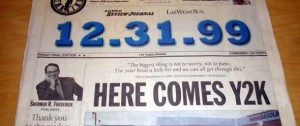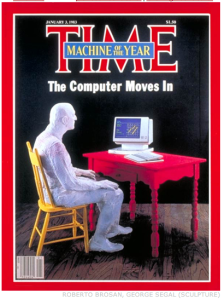Computers
The Beginning of Time?
Unix epoch time begins at 00:00:00 UTC/GMT. Basically, UNIX operating systems count time in seconds starting from midnight January 1, 1970 Greenwich Mean Time. Yeah, this is beyond the threshold of geekiness for most of you, but don’t come crying to me when the Y2K38 problem bites you in the butt.
ENIAC Completed

ENIAC, the first fully electronic computer, is completed by its designers John Mauchly and J. Presper Eckert. It would later be unveiled to the public on February 14th.
Y2K Looms
The world waits in anticipation of the year 2000 and the potential disasters that might be brought about by the Y2K bug. Personally, having worked years in a corporate environment getting ready for Y2K, I was pretty confident that nothing major would happen. So just for fun, I set up my home with a remote control to turn off all the lights in my house and the TV our friends would be watching at our New Years’ Eve party. Seconds after midnight, I pushed the remote control in my pocket and everything went out. There were definitely a few people at my house that night who thought the apocalypse had come. Technology practical jokes are so much fun!
Personal Computer “Man of the Year”
Time Magazine awards its “Man of the Year” award to the personal computer, calling it “Machine of the Year,” the first non-human to receive the award since its creation in 1927. Describing the personal computer as 1982’s “greatest influence for good or evil,” the article titled “The Computer Moves In,” recognizes that the capabilities of the personal computer can be multiplied almost indefinitely by connecting it to a network of other computers, which can be used to access electronic databases or send electronic mail. The article stated that 80% of Americans expected that “in the fairly near future, home computers will be as commonplace as television sets or dishwashers.” Beating out other candidates such as Ronald Reagan and Margaret Thatcher, Time stated, “There are some occasions, though, when the most significant force in a year’s news is not a single individual but a process, and a widespread recognition by a whole society that this process is changing the course of all other processes. That is why, after weighing the ebb and flow of events around the world, TIME has decided that 1982 is the year of the computer.” 724,000 personal computers were sold in 1980 and this figure doubled in both 1981 and 1982. Certainly, those who were paying attention at the time recognized that the personal computer was transforming society.



